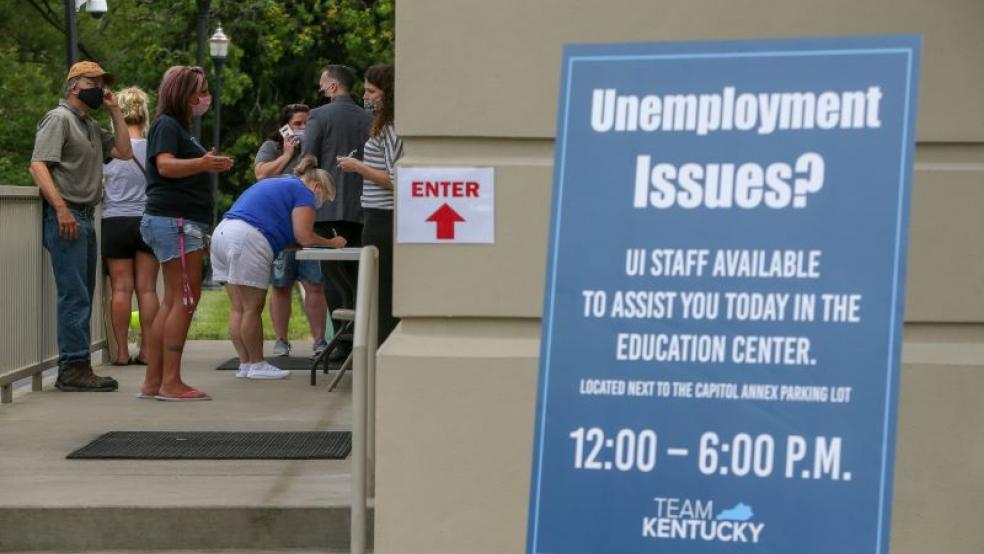The weekly unemployment reports from the Labor Department are “flawed,” according to a government watchdog, providing an inaccurate picture of the number of people who are unemployed and receiving benefits at any given time.
In a report issued Monday, the Government Accountability Office said that the weekly unemployment statistics have been distorted by processing delays, double-counting, fraud, and inconsistency of reporting across states. Backlogs of claims have been particularly problematic, the GAO said, inflating numbers as states struggle to handle an avalanche of paperwork that in some cases dates backs weeks and months.
In ordinary times, weekly initial jobless claims serve as a pretty good estimate for layoffs and the number of newly unemployed people, GAO said. But the millions of job losses produced by the coronavirus pandemic have overwhelmed state unemployment offices, breaking the link between actual layoffs and claims processing. “[D]ue to state backlogs in processing claims and other data issues, these traditional estimates are not appropriate in the context of the pandemic,” GAO said. “For example, state backlogs in processing claims led to individuals submitting claims for multiple weeks of retroactive benefits during single reporting periods. So, by using claims counts to represent the number of people, many individuals are counted more than once in DOL’s estimate.”
Inconsistency in individual state reporting has also led to distortions. In one example provided by GAO, the state of Arizona failed to report data for claims within the Pandemic Unemployment Assistance program for the week ending July 23, 2020, due to concerns about fraud. Had it reported, the Labor Department would have likely shown a “significant increase” in participation in unemployment programs nationally for that week, rather than a decrease.
In response to the GAO analysis, the Labor Department said “it plans to clarify in its weekly news releases that the numbers it reports for weeks of unemployment claimed do not accurately estimate the number of unique individuals claiming benefits.” The department does not plan to revise its already-issued reports, however, due to both time constraints and the fact that many of the emergency unemployment programs passed by Congress at the beginning of the pandemic are scheduled to end next month.
Shortchanging payments: In addition to flawed statistics, the GAO found that many states were underpaying certain unemployment benefits. A majority of states have been paying the minimum amount in the temporary Pandemic Unemployment Assistance program – which aids workers who are usually excluded from unemployment insurance systems, including self-employed and gig workers – rather than the amount they are entitled to based on previous earnings. As a result, millions of households may have fallen below the poverty level after the Federal Pandemic Unemployment Compensation program, which provided an additional $600 in unemployment benefits, expired at the end of July.



